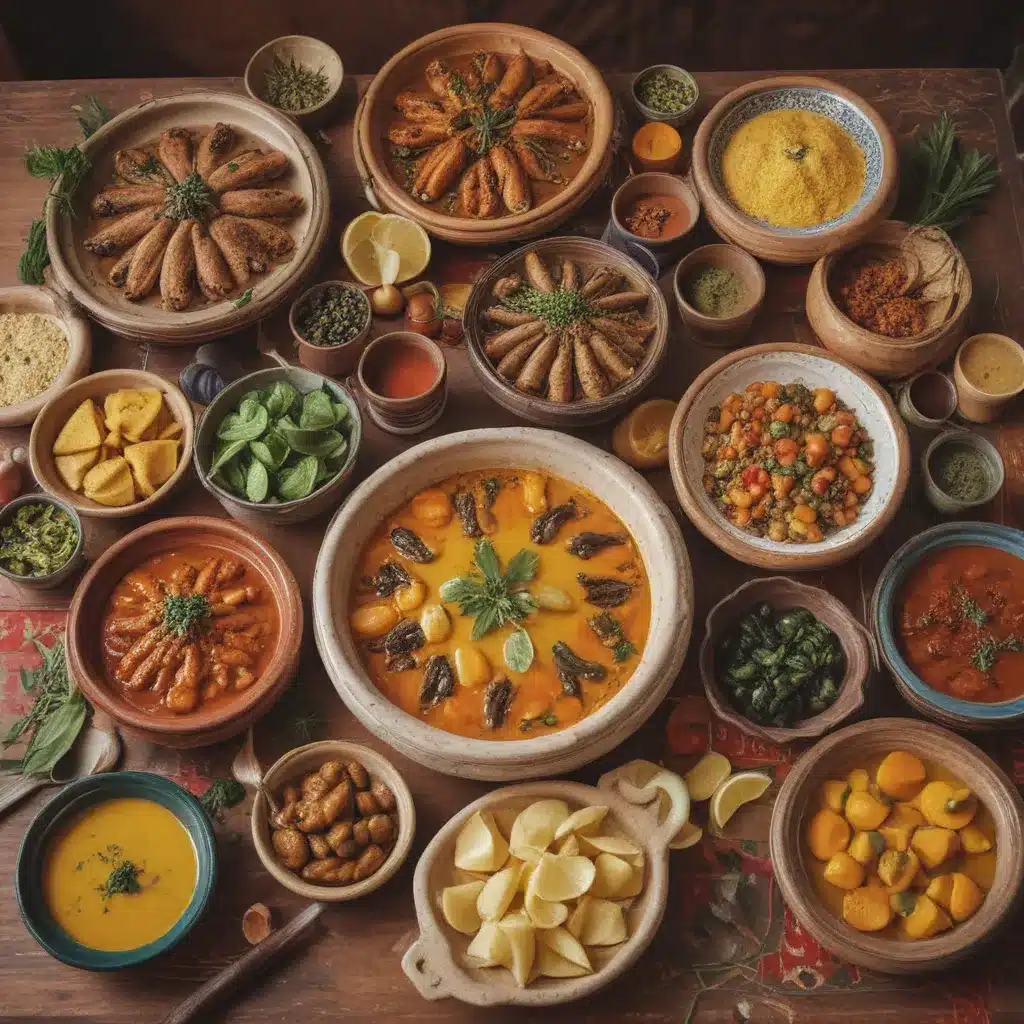
A Delicious Dive into the Diverse Flavors of Morocco
As I strolled through the bustling streets of New York City, the alluring aromas of spices and sizzling meats beckoned me towards a hidden gem – El Bahia, a Moroccan restaurant tucked away in the heart of the city. Little did I know that this culinary adventure would open my eyes to the vibrant and multifaceted world of Moroccan cuisine, far beyond the ubiquitous tagine.
Rediscovering the Treasures of Moroccan Culinary Heritage
Growing up, my exposure to Moroccan food had been limited to the classic tagines and couscous dishes. However, as I delved deeper into the rich tapestry of Moroccan culinary traditions, I discovered a vast array of flavors, techniques, and regional specialties that challenged my preconceptions.
One pivotal moment occurred during my recent trip to Morocco, where I had the privilege of being welcomed into the home of a local family. As I sat around the table, my senses were overwhelmed by the fragrant spices, the sizzling sauces, and the sheer diversity of the dishes that graced the table. This was not the Moroccan cuisine I had encountered in tourist traps or chain restaurants – this was the authentic, homespun fare that had been passed down through generations.
Exploring the Unexpected Delights of Moroccan Street Food
My Moroccan culinary odyssey truly began when I ventured beyond the confines of the restaurant and immersed myself in the vibrant street food scene. As I navigated the bustling medinas, I was confronted with a dizzying array of sights, sounds, and smells that defied my expectations.
Contrary to the ubiquitous tagines and couscous dishes that are often touted as the quintessential Moroccan fare, the street vendors offered a tantalizing array of offal, organ meats, and exotic delicacies that challenged my culinary boundaries. From the succulent sheep’s tongue sprinkled with cumin and coarse salt to the creamy sheep’s brains, each bite was a revelation, shattering my preconceptions about Moroccan cuisine.
As I ventured deeper into the maze-like medinas, I encountered even more unexpected delights. The stuffed spleen, known as “tehanine,” a centuries-old Jewish dish that had found its way into the Moroccan street food canon, was a perfect example of the cultural cross-pollination that had shaped this vibrant culinary landscape.
Uncovering the Diversity of Moroccan Breads and Pastries
But the culinary surprises didn’t stop there. While the tagines and couscous may be the iconic representations of Moroccan cuisine, the country’s bread and pastry traditions are equally captivating and diverse.
From the buttery, layered “msemmen” to the spongy “baghrir” pancakes, each loaf and pastry revealed a unique history and cultural influence. I was particularly intrigued by the “khlii,” a Moroccan take on duck confit, made from beef that had been rubbed with salt, spices, and air-dried in the sun for days on end. The intense, beefy flavor and the satisfying chew of this preserved meat were a testament to the ingenuity and resourcefulness of Moroccan cooks.
The Richness of Moroccan Culinary Traditions
As I delved deeper into the world of Moroccan cuisine, I began to appreciate the intricate tapestry of influences that had shaped this dynamic culinary landscape. From the Berber roots of couscous and tagines to the French and Spanish colonial legacies that had introduced delicate pastries and savory sandwiches, Moroccan cuisine is a testament to the country’s rich cultural heritage.
The Moroccan approach to cooking, as described by the author of the blog “My Moroccan Food,” is one of simplicity and intuition. The concept of “aanik mizanik,” or “your eye is your scale,” encapsulates the idea that the best ingredients don’t need elaborate recipes to shine. Instead, Moroccan cooks rely on their senses and experience to create dishes that are both comforting and full of character.
This philosophy is reflected in the way Moroccan families prepare meals, as I witnessed during my visit. The casual, familial atmosphere, the shared dishes, and the unspoken understanding of flavors and textures create a dining experience that is as much about community as it is about the food itself.
Embracing the Complexity of Moroccan Cuisine
As I sit here, reflecting on my Moroccan culinary odyssey, I am struck by the realization that this cuisine is far more than just the tagines and couscous that have become its global ambassadors. It is a rich tapestry of flavors, techniques, and cultural influences that defy simple categorization.
From the bold and unexpected street food to the comforting and intricate home-cooked meals, Moroccan cuisine is a testament to the ingenuity, resourcefulness, and deep-rooted traditions of a people who have honed their culinary craft over centuries. And as I return to New York City, I am eager to share this newfound appreciation for the depth and complexity of Moroccan cuisine with the patrons of El Bahia, inviting them to embark on their own culinary adventure through the vibrant flavors of Morocco.


